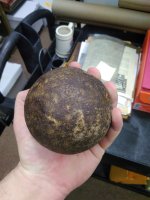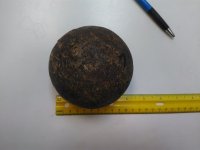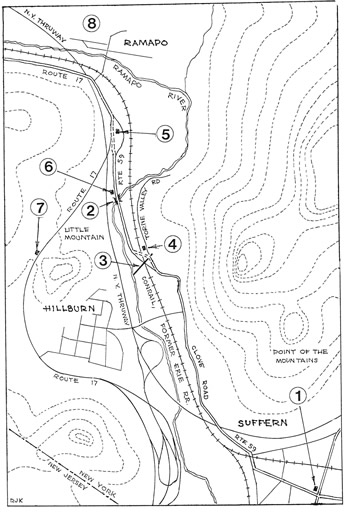EnvoyToTheMolePeople
Sr. Member
- Oct 1, 2018
- 422
- 647
- Detector(s) used
- Garrett AT Max
- Primary Interest:
- All Treasure Hunting
I was at a museum in Mahwah, NJ and came across this item. They didn't know exactly what it was or where it had come from, only that it was found in a drawer in the museum while some things were being cleaned out. They think it's a cannon ball, but don't know anything else. It's approximately 7 lbs and 4" in diameter. I'm no expert, but I know a few people around here are.







